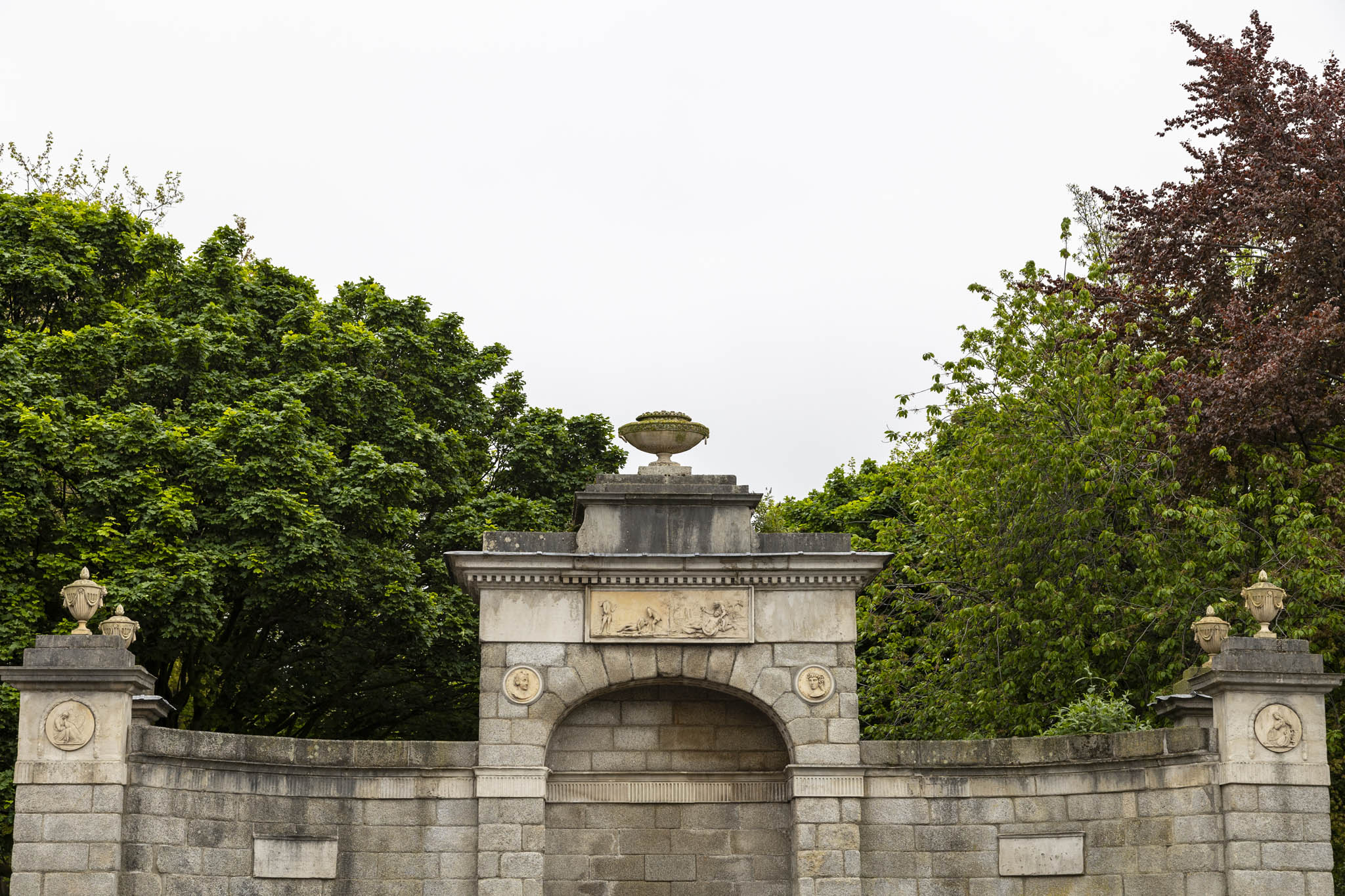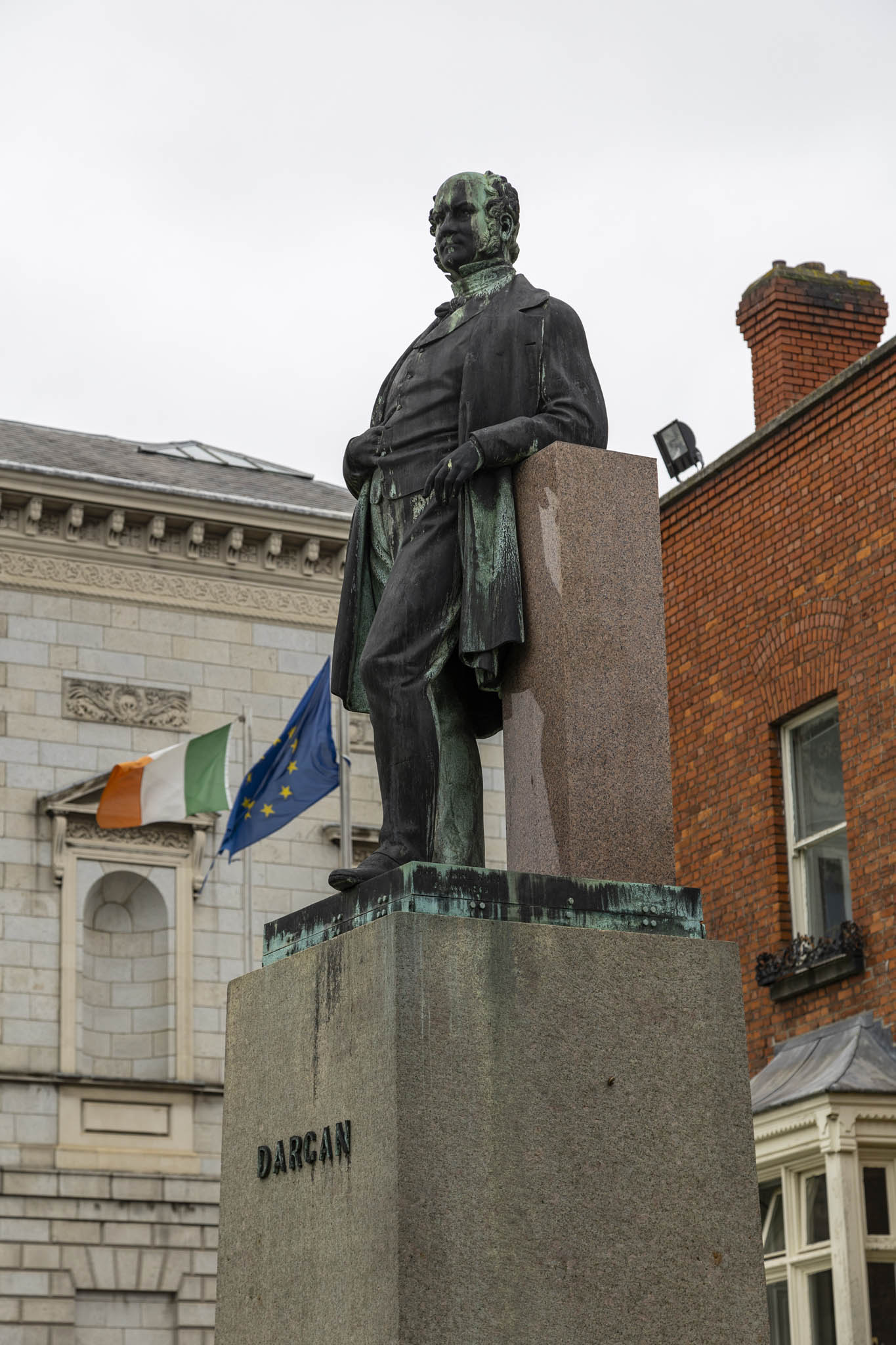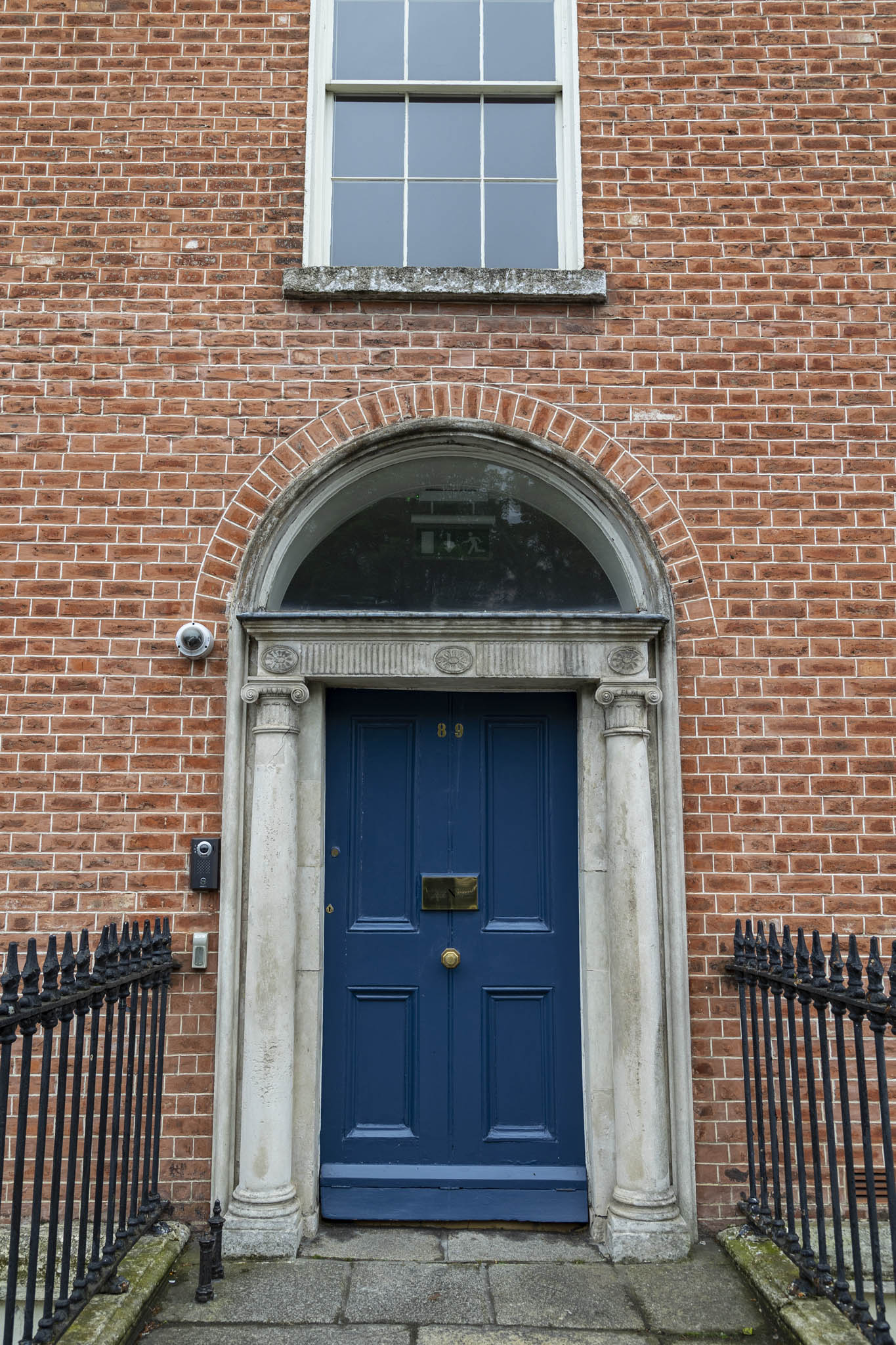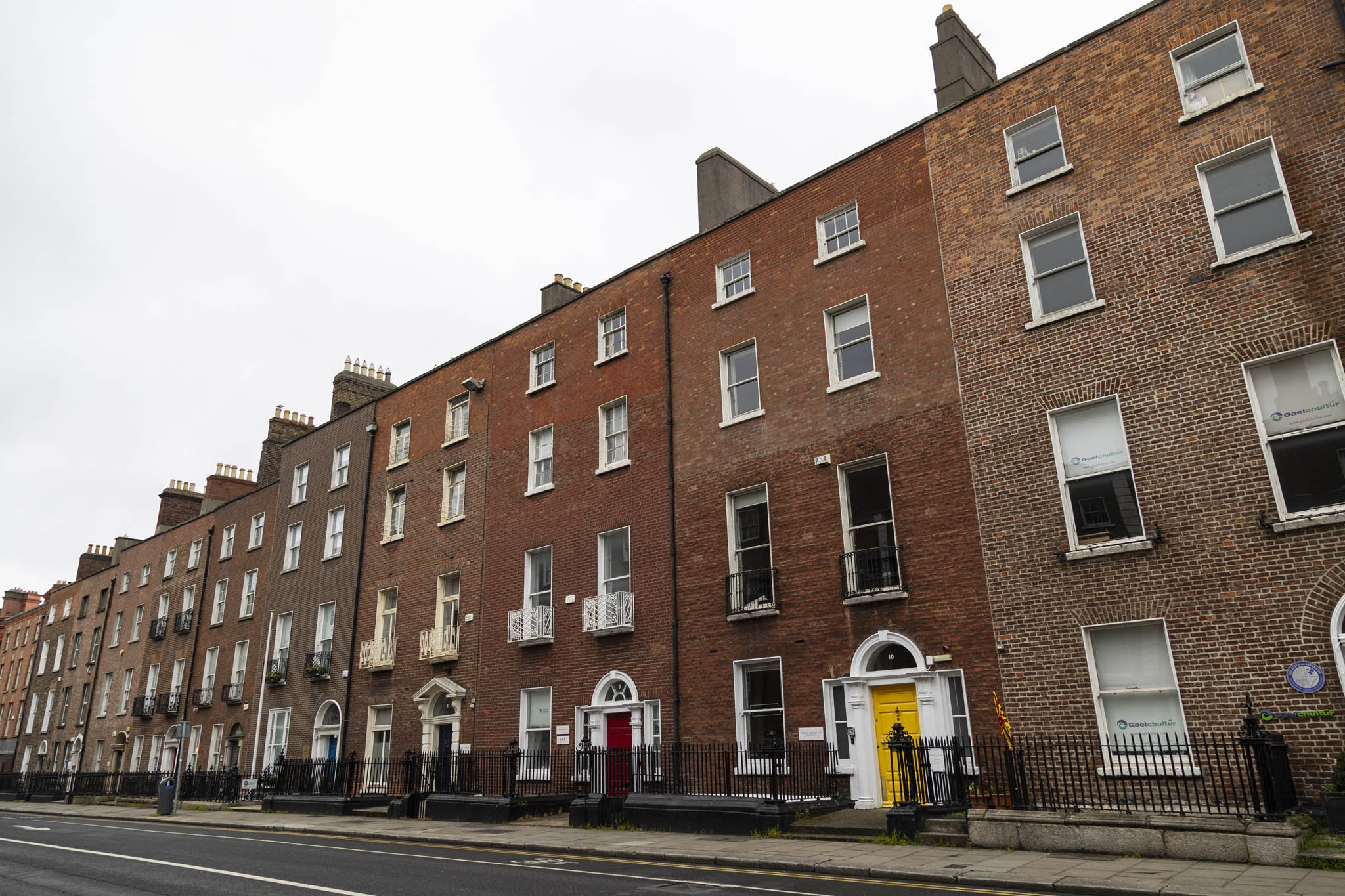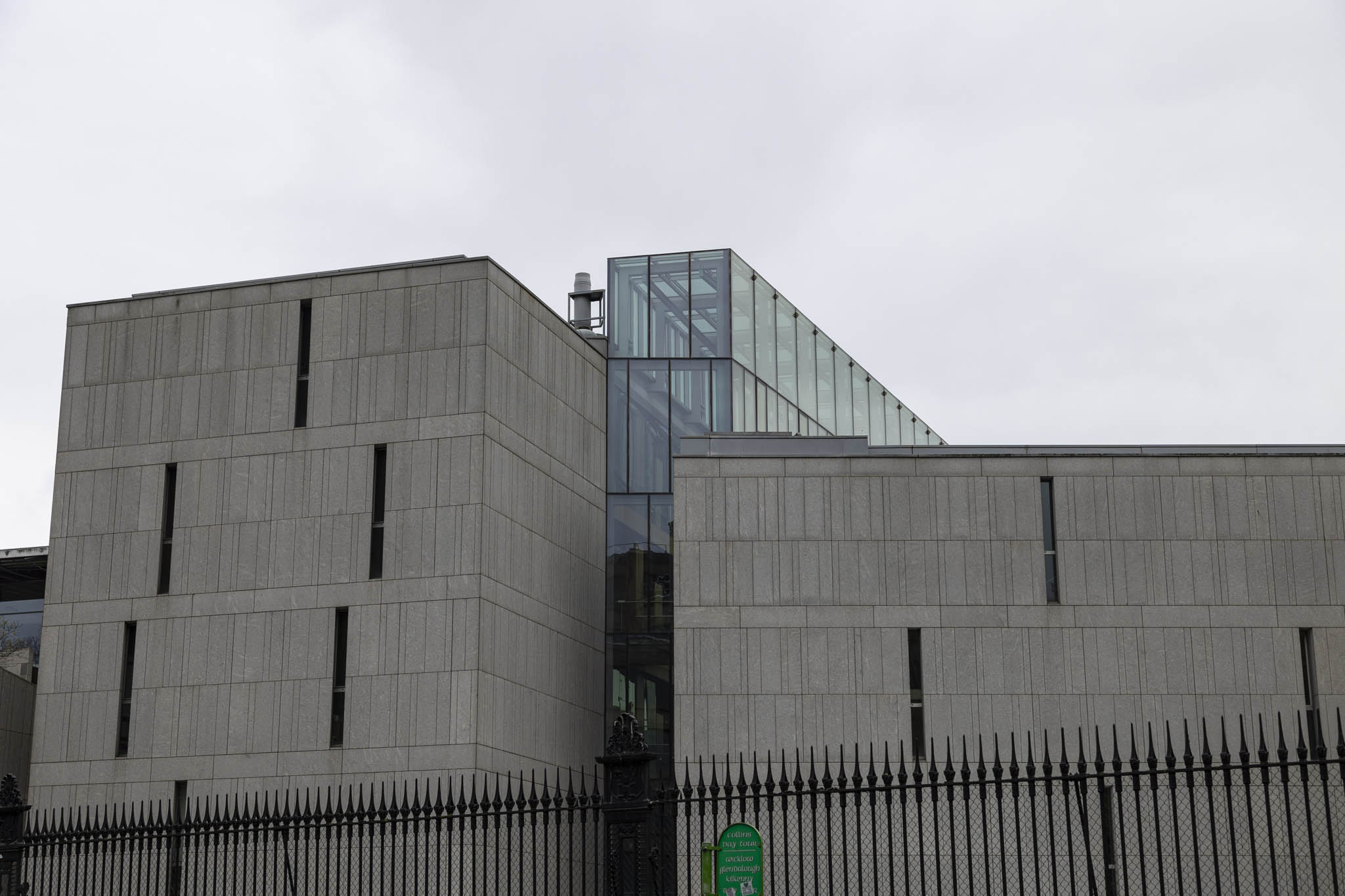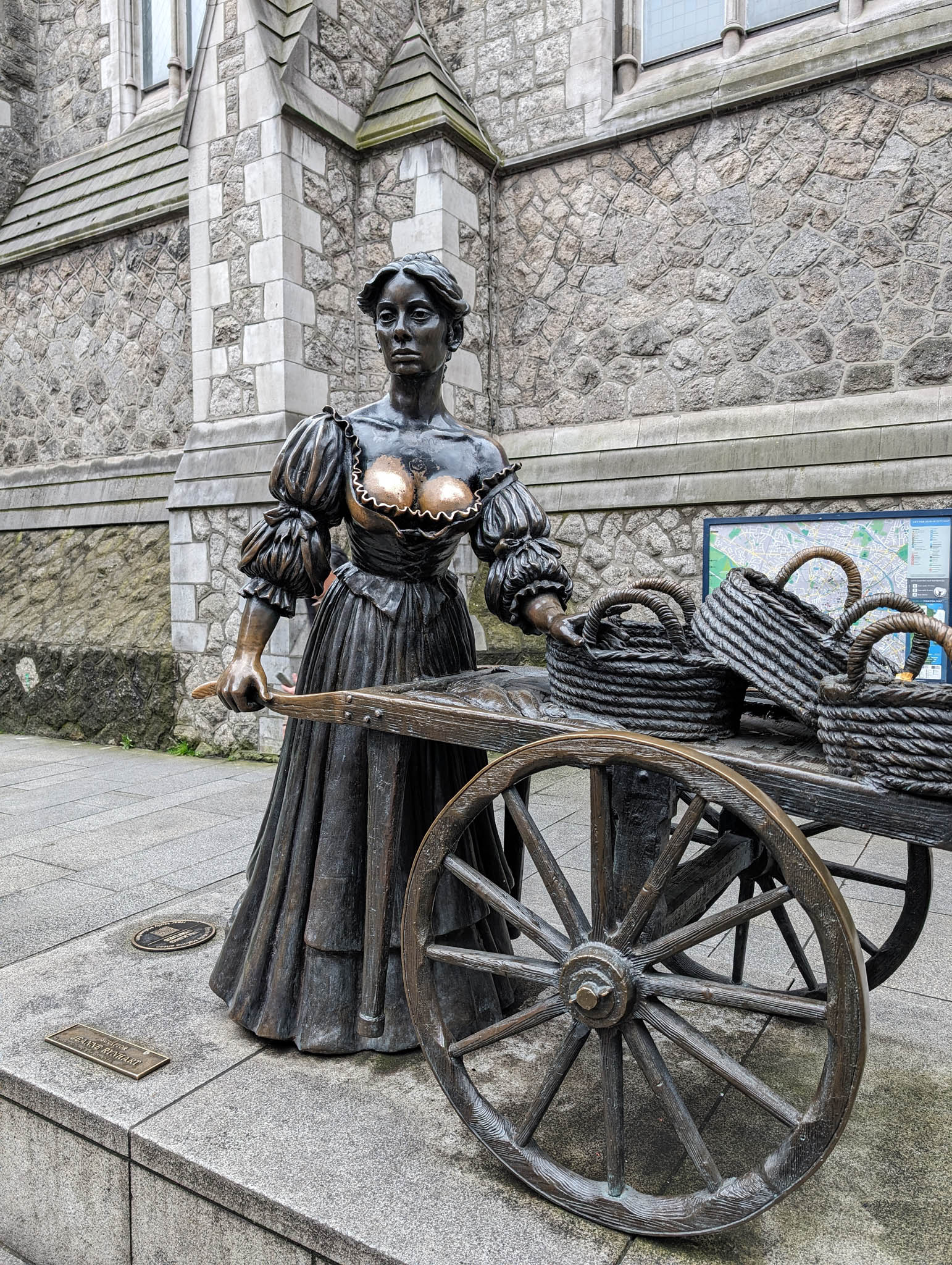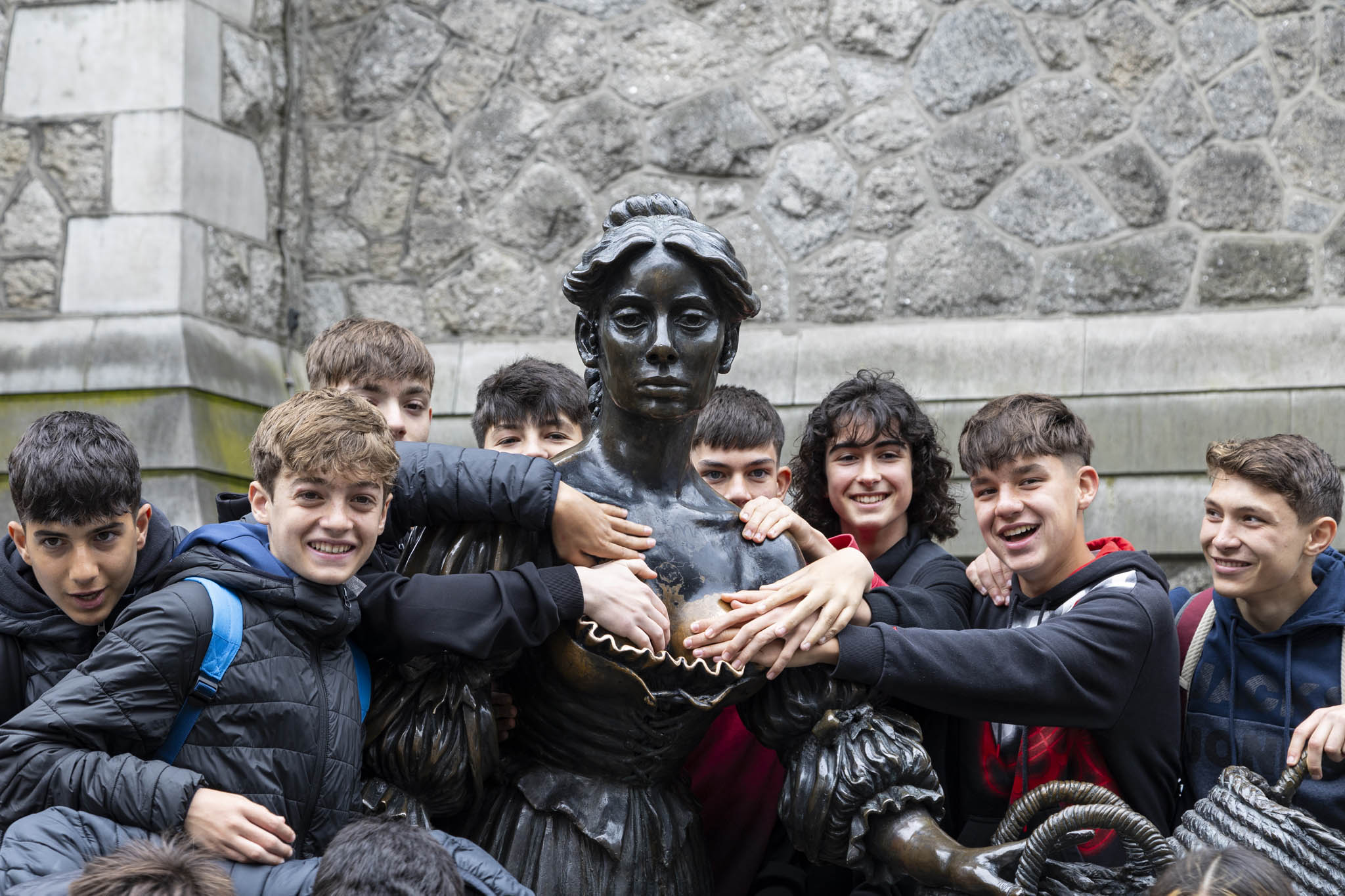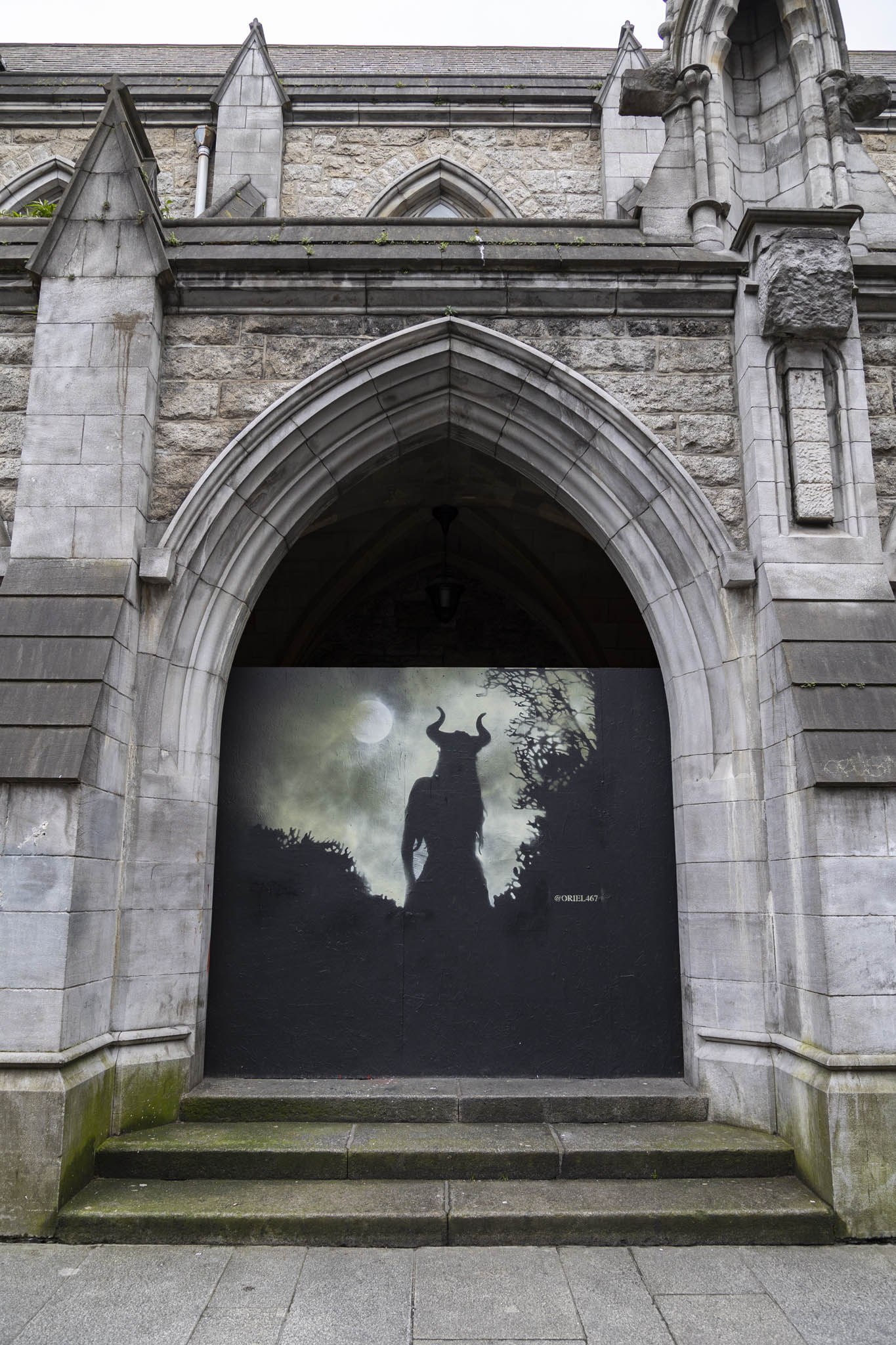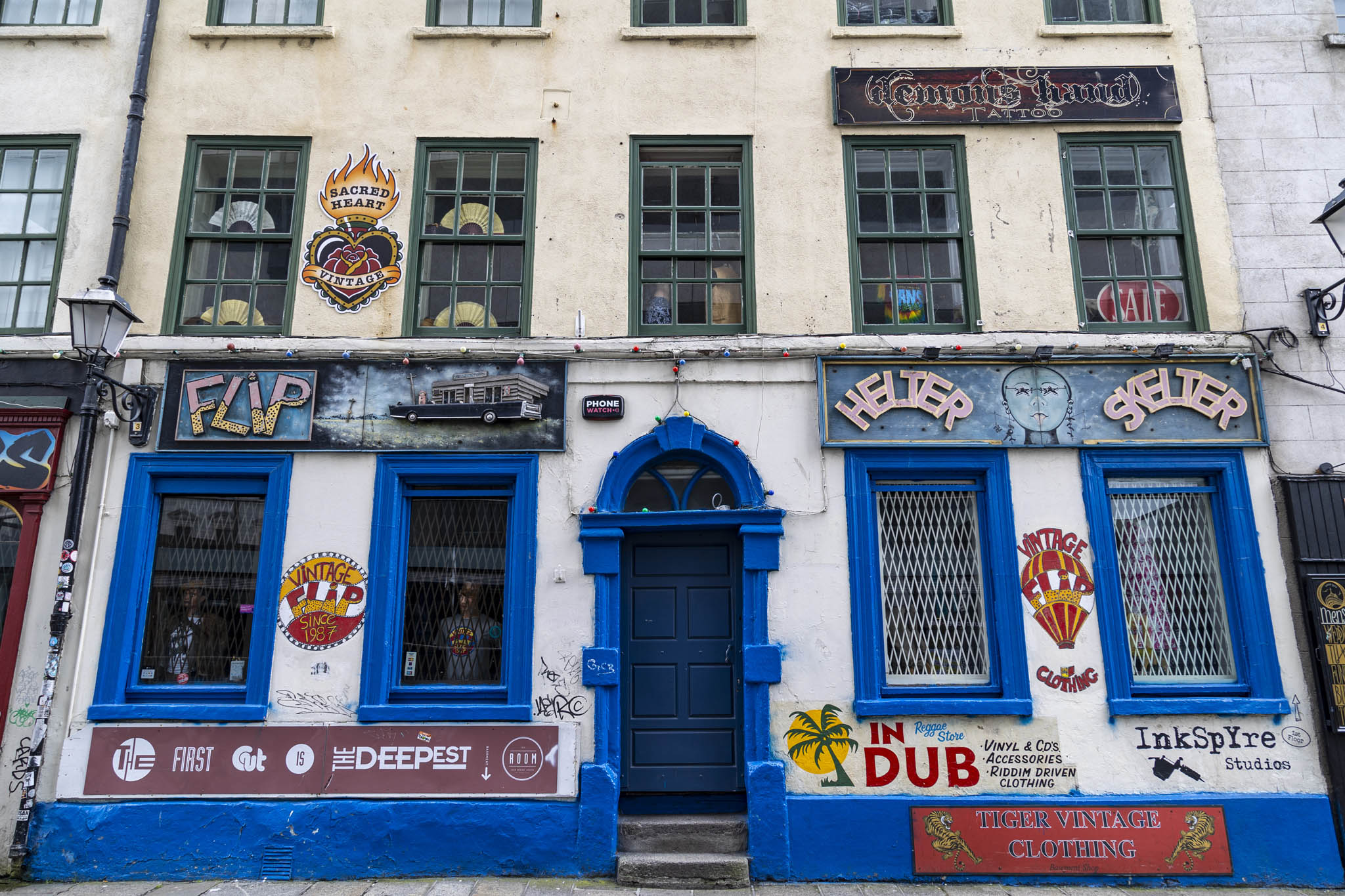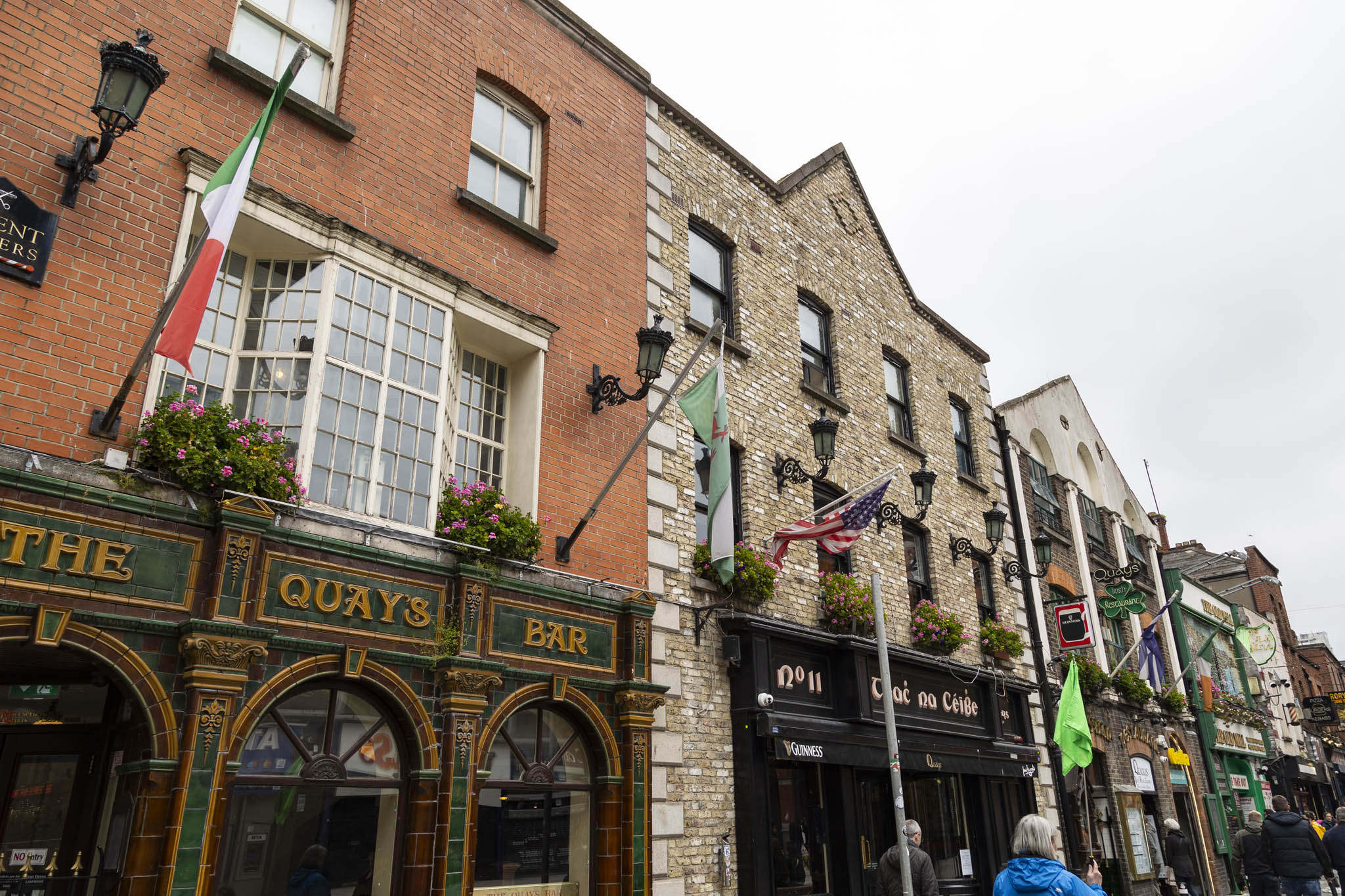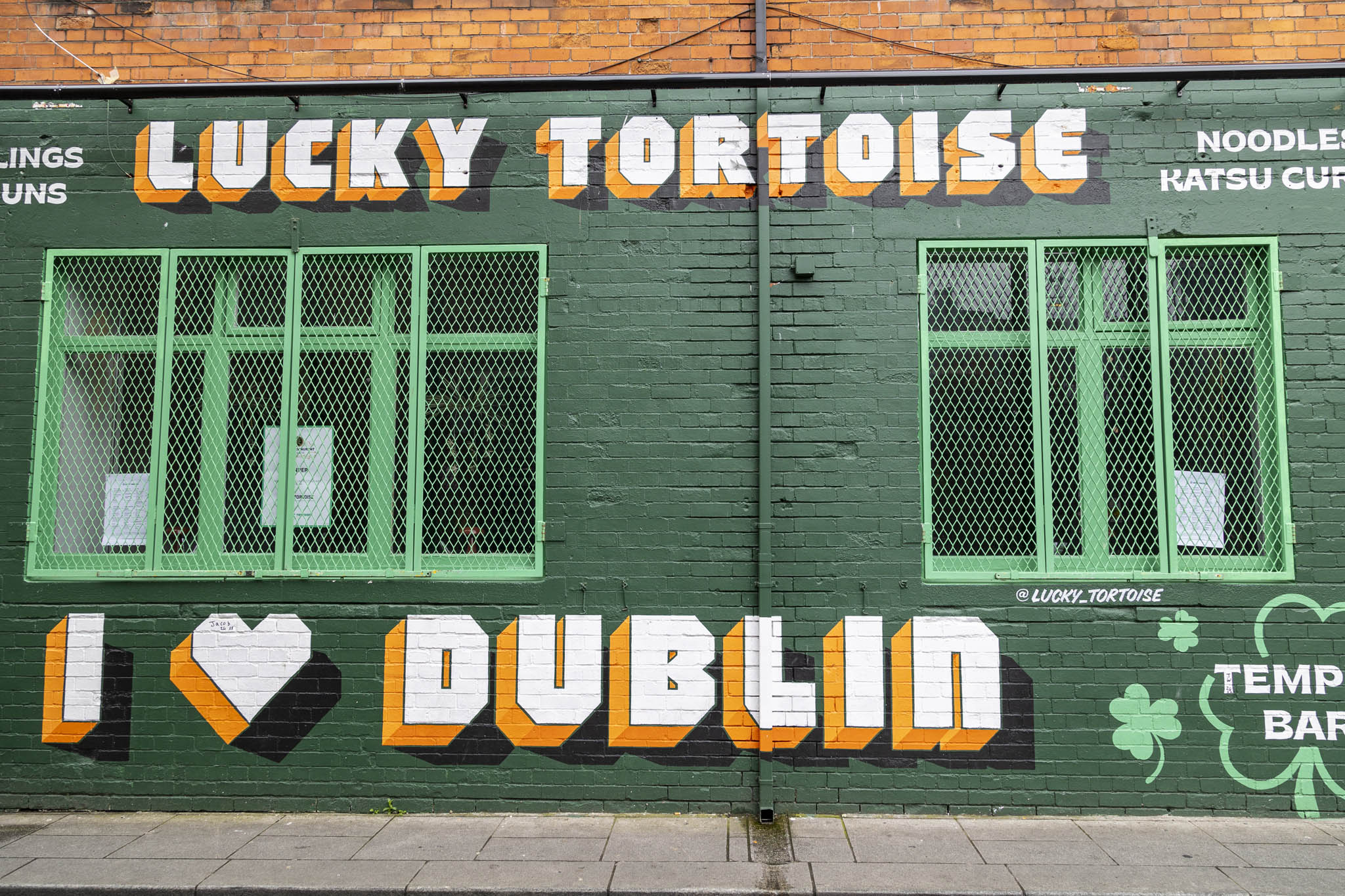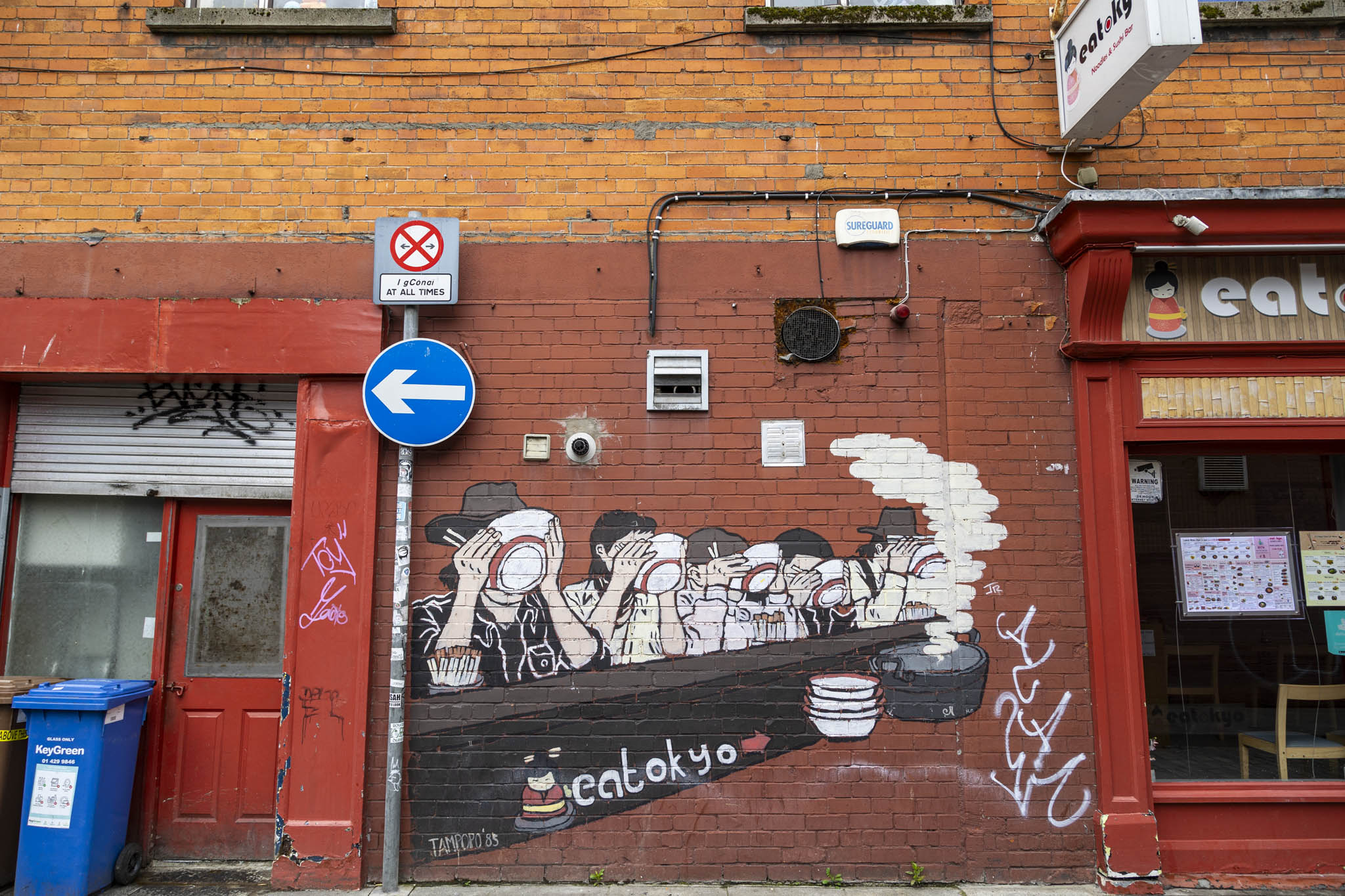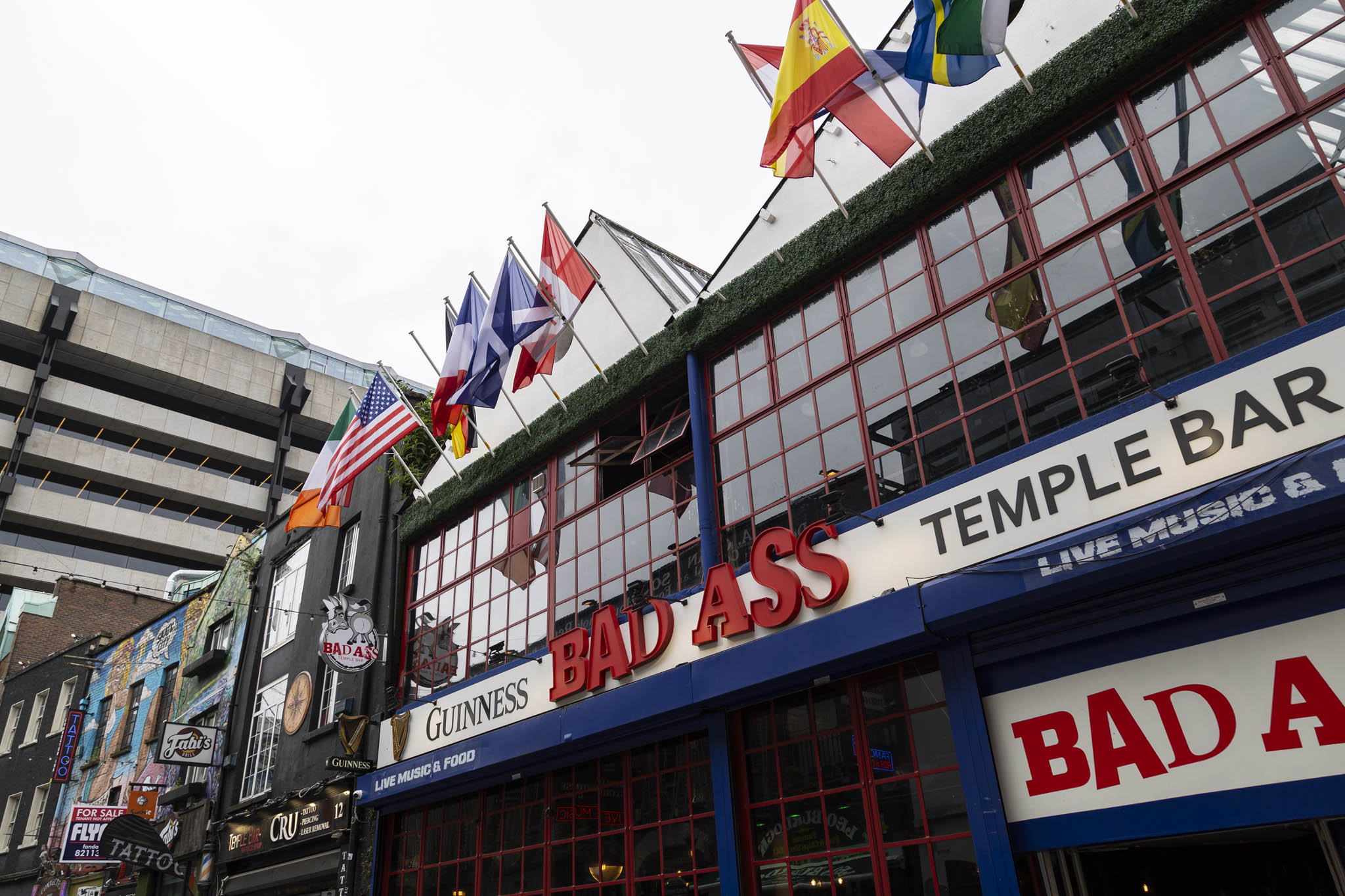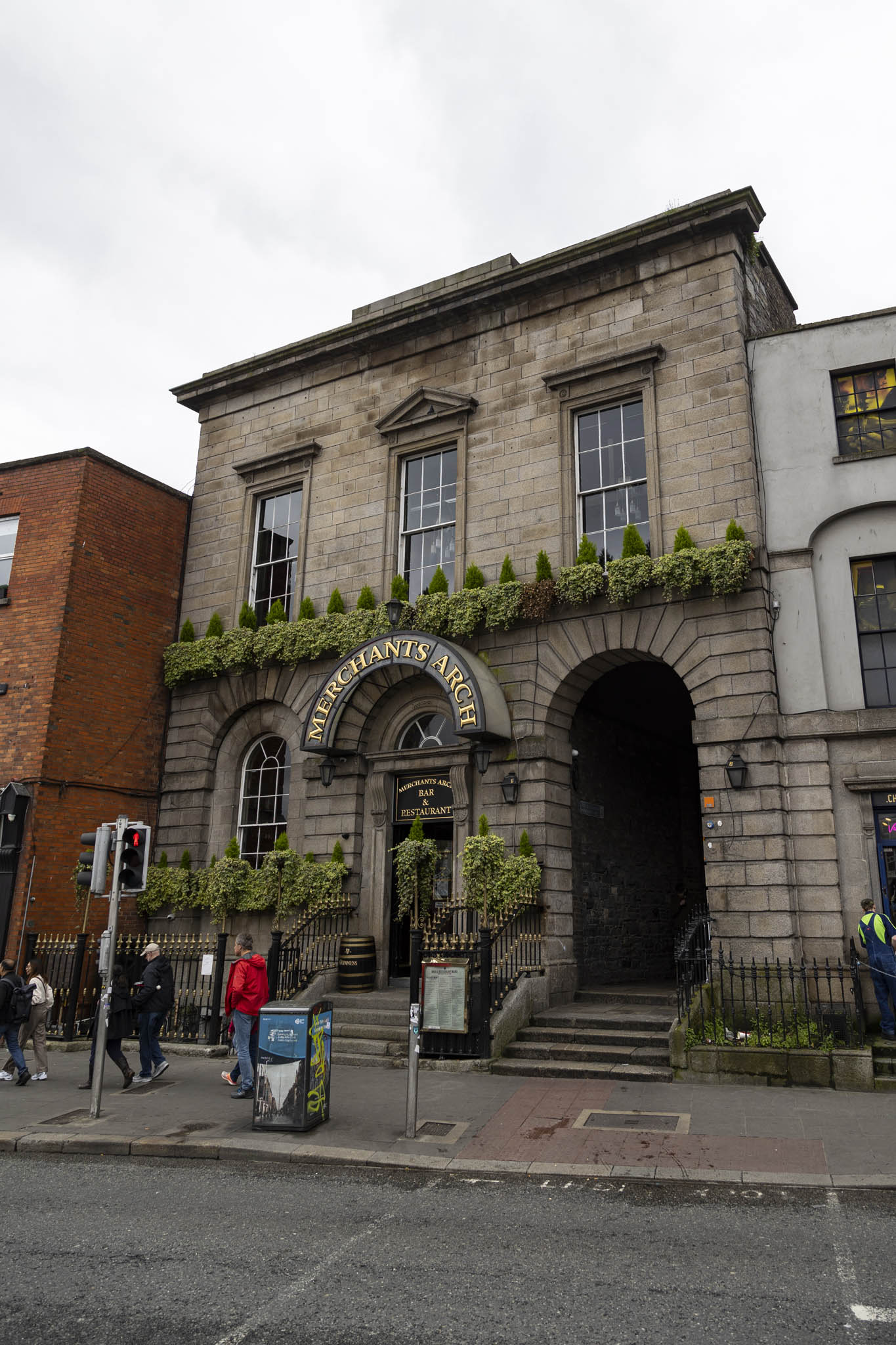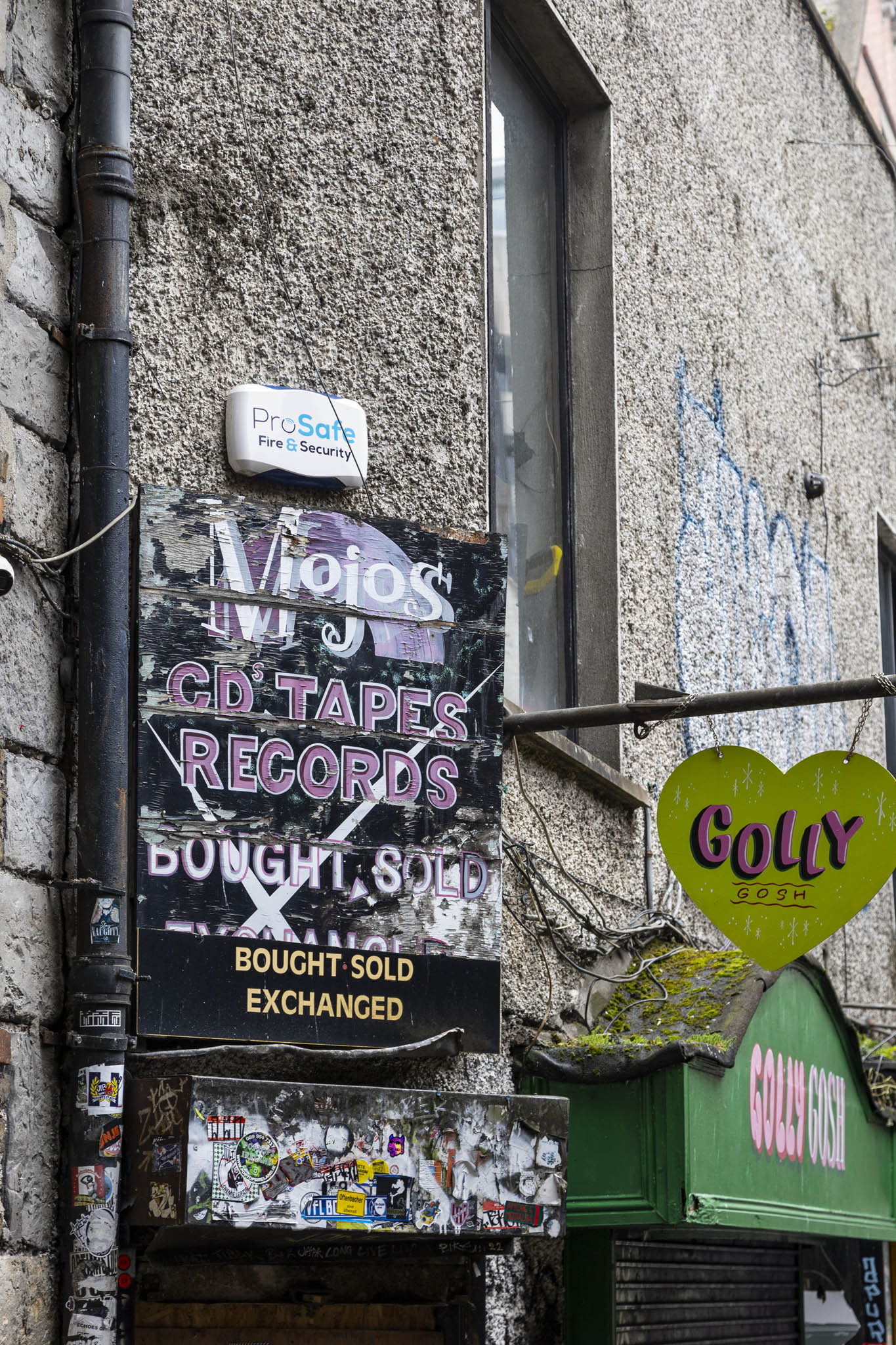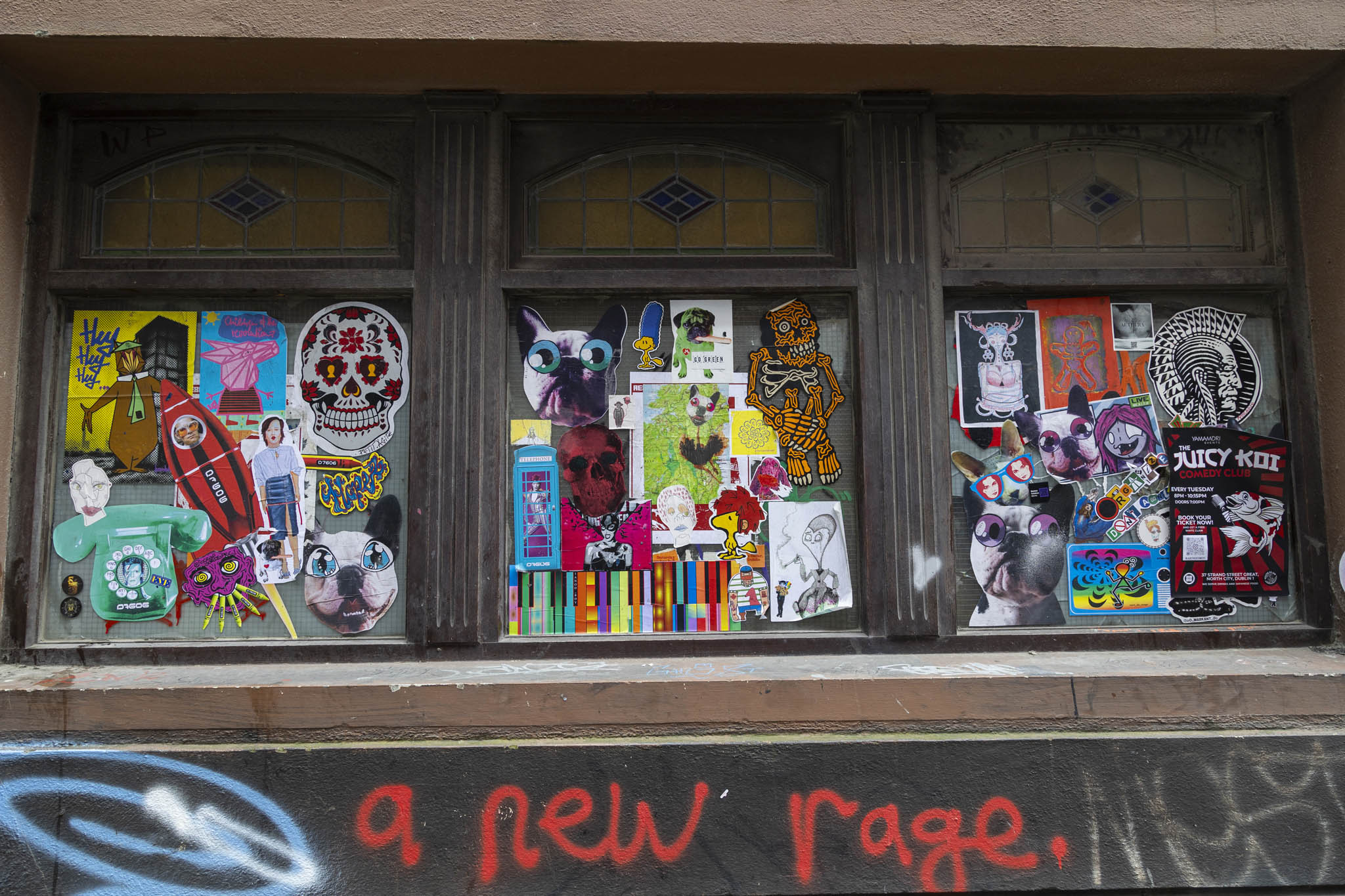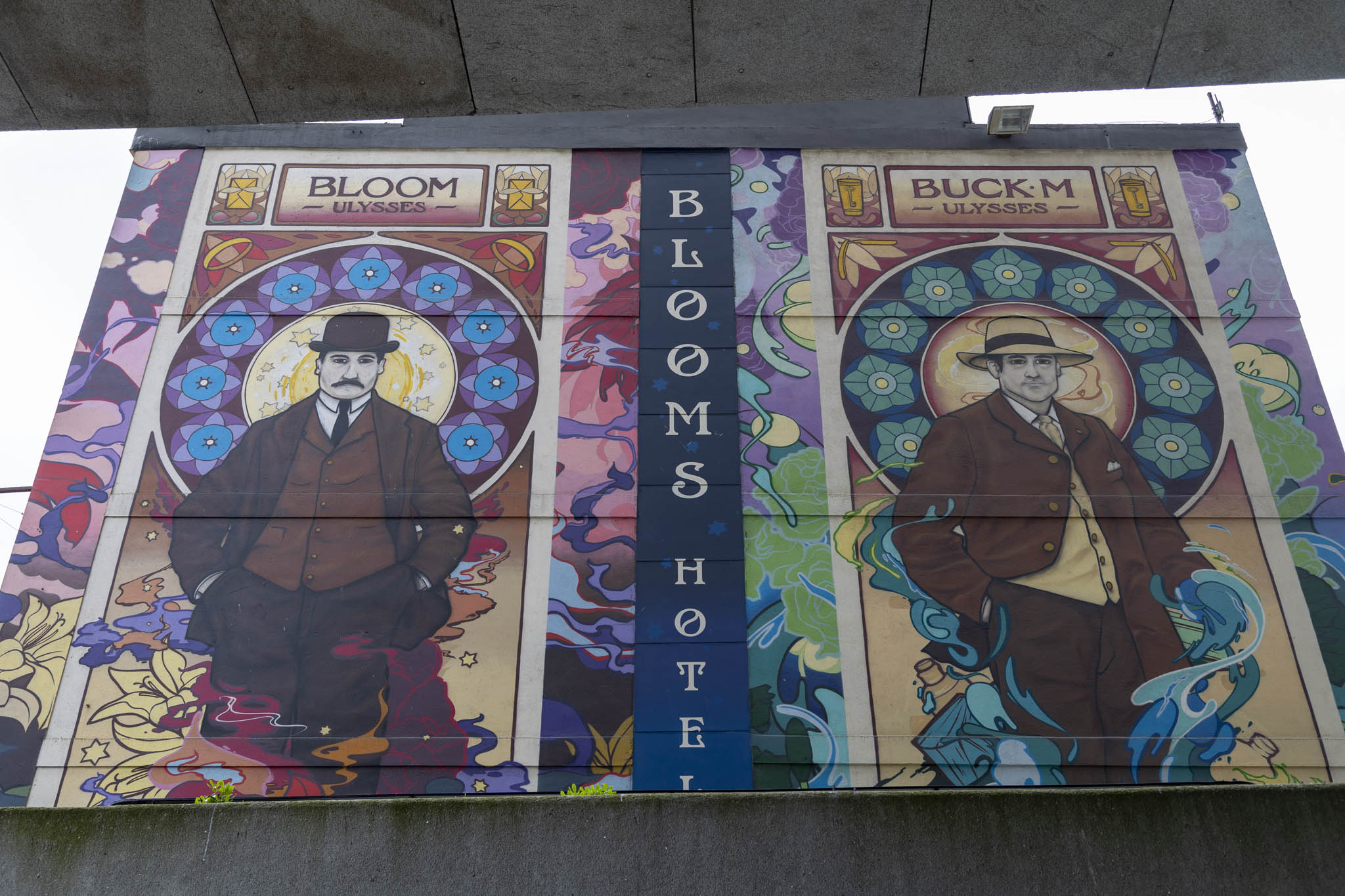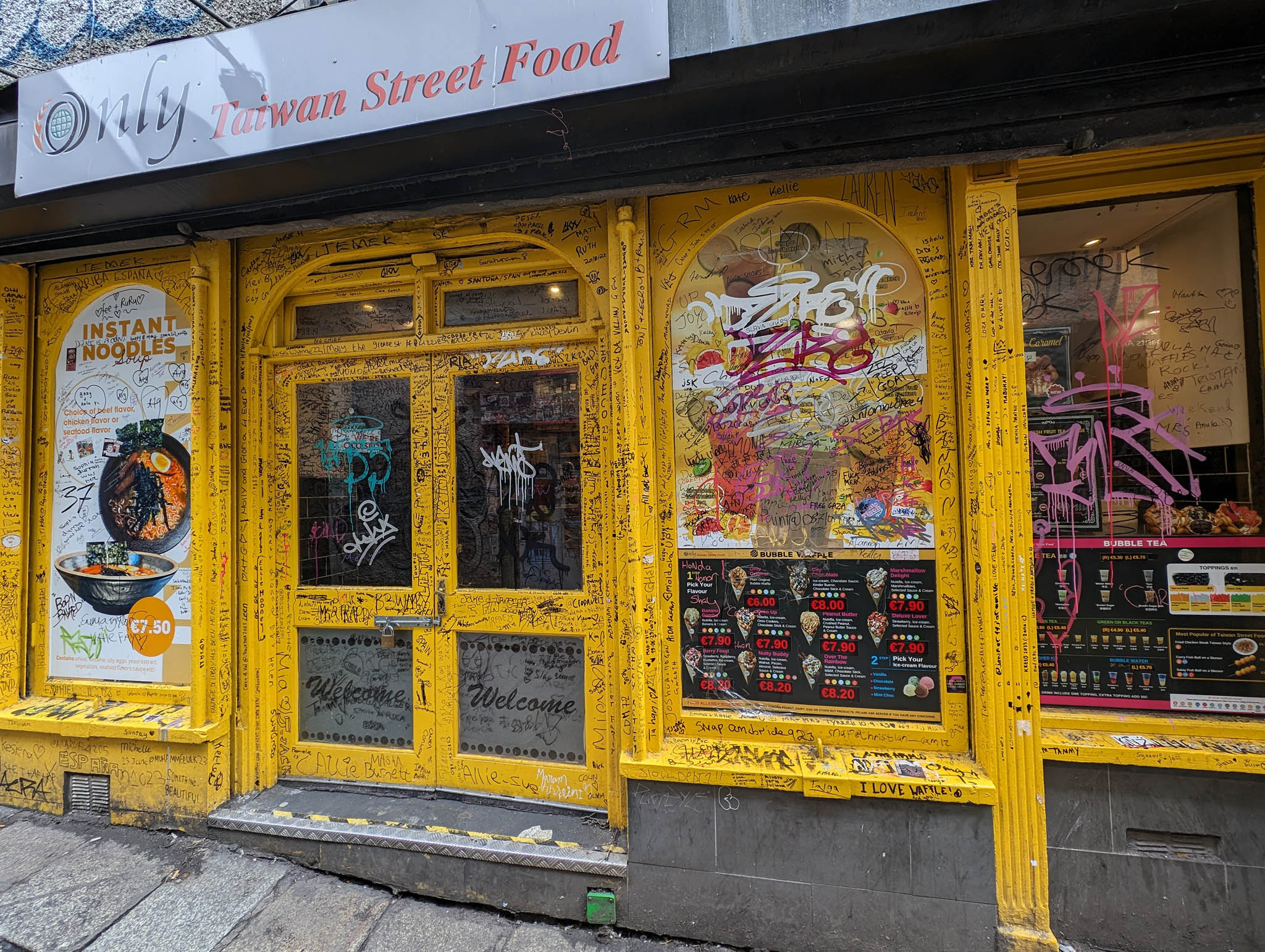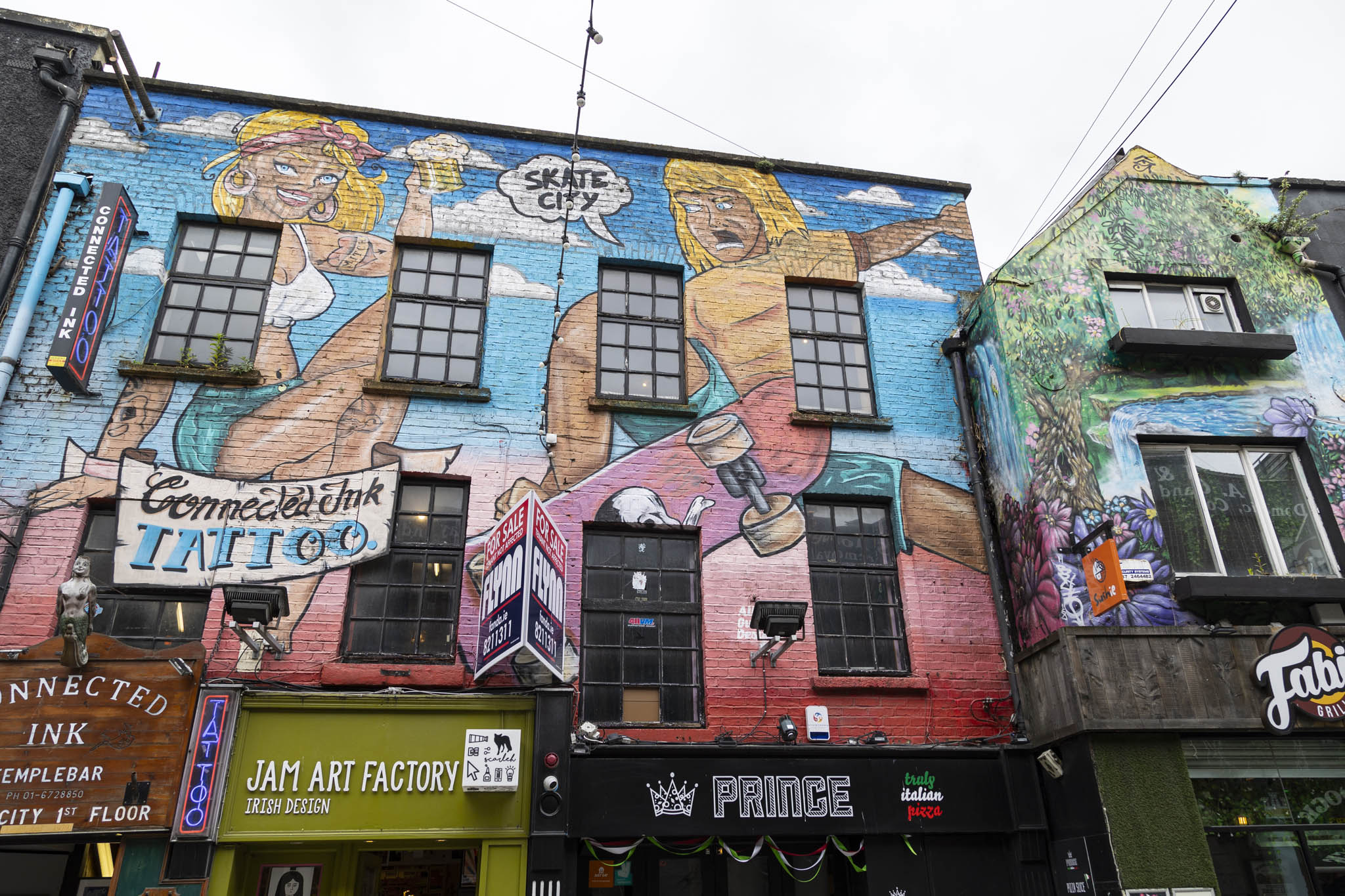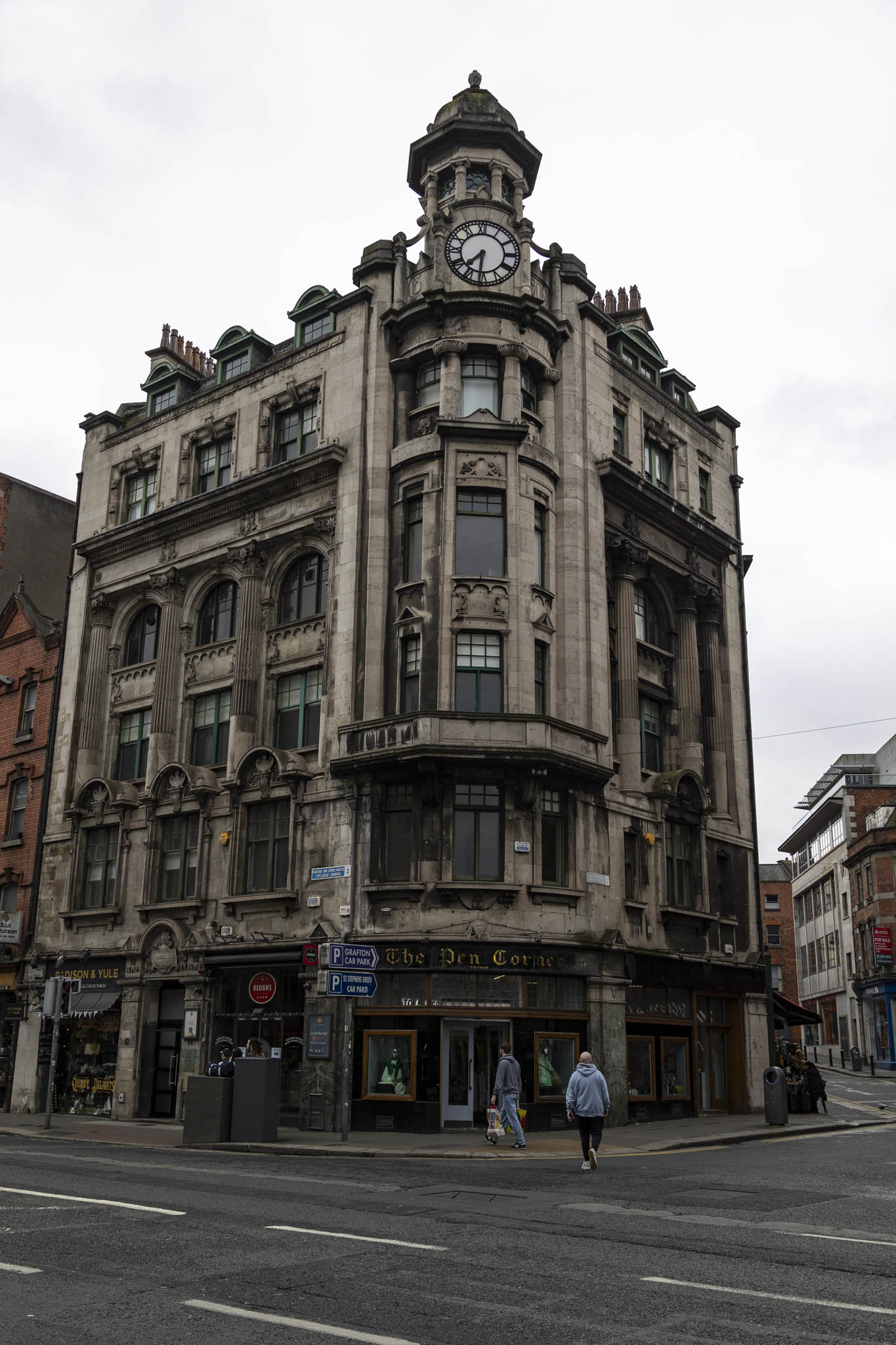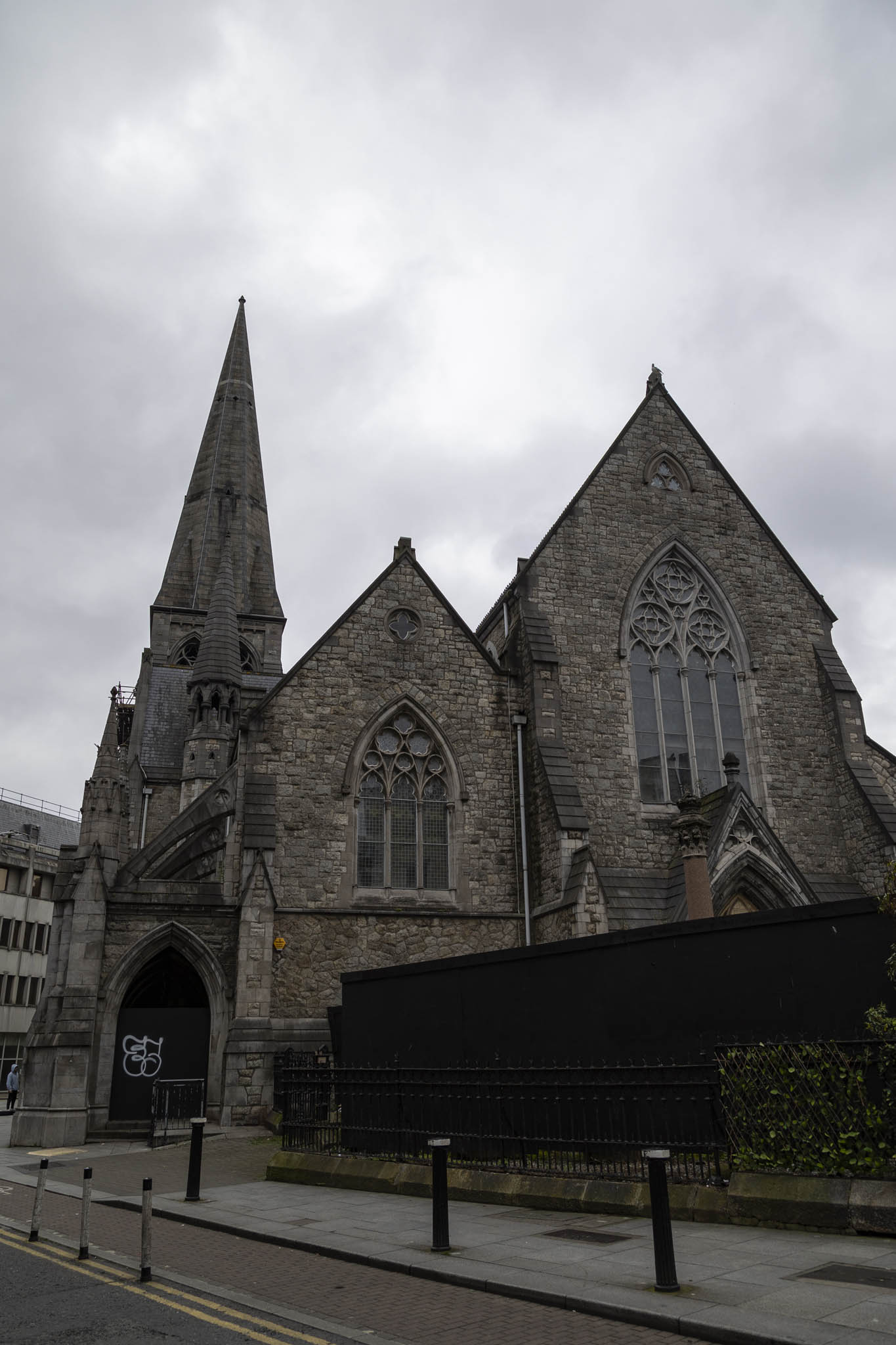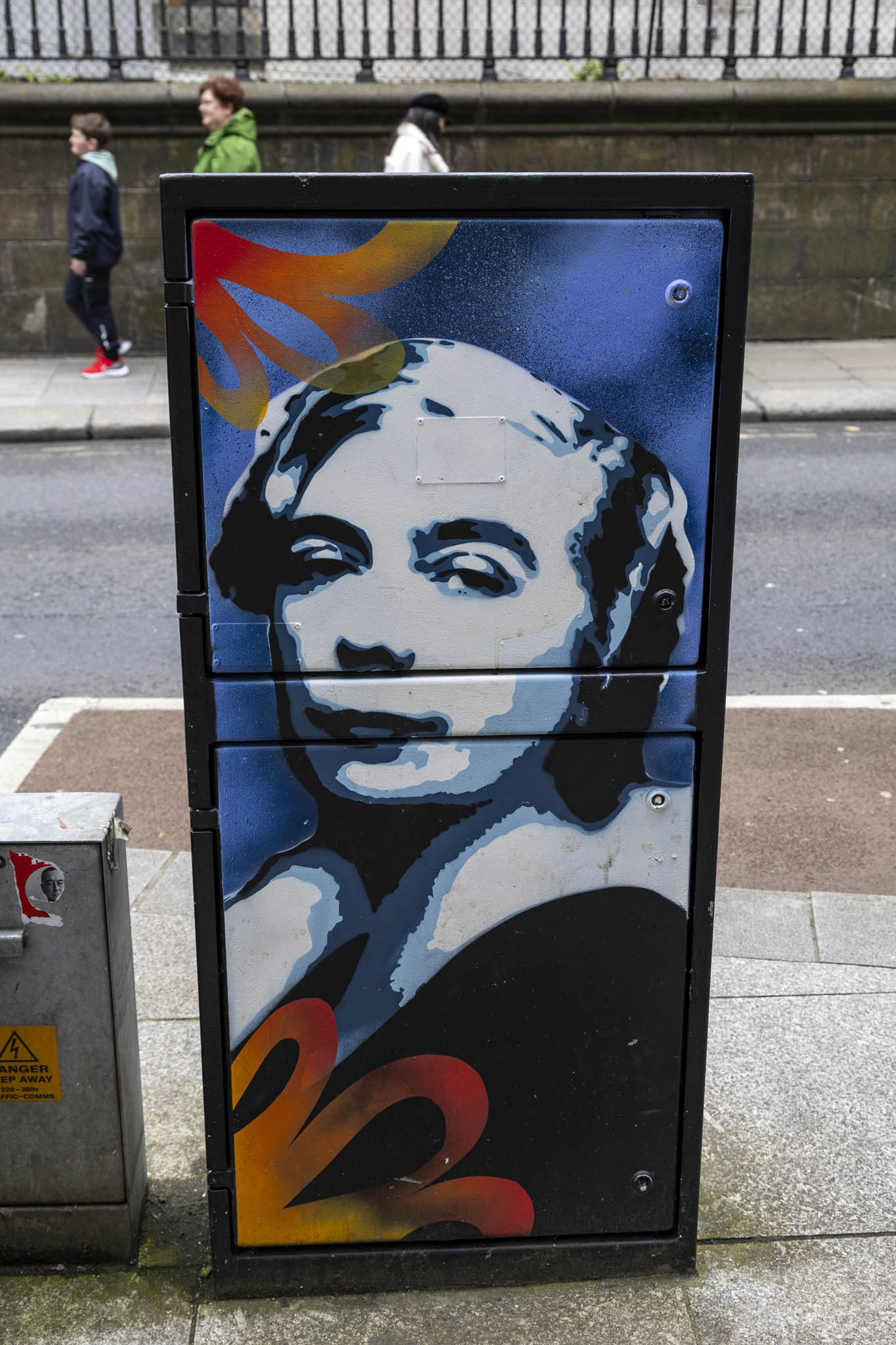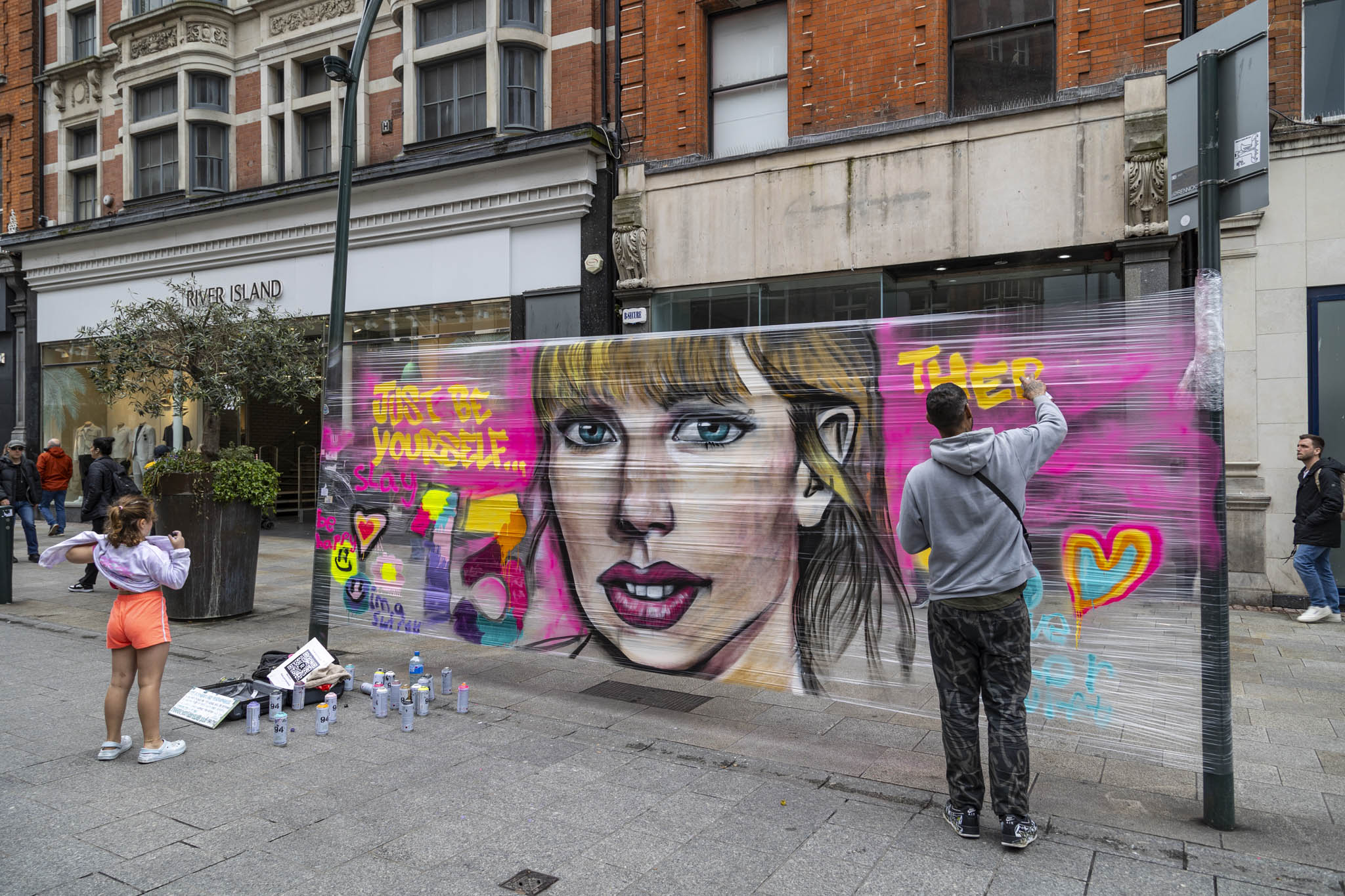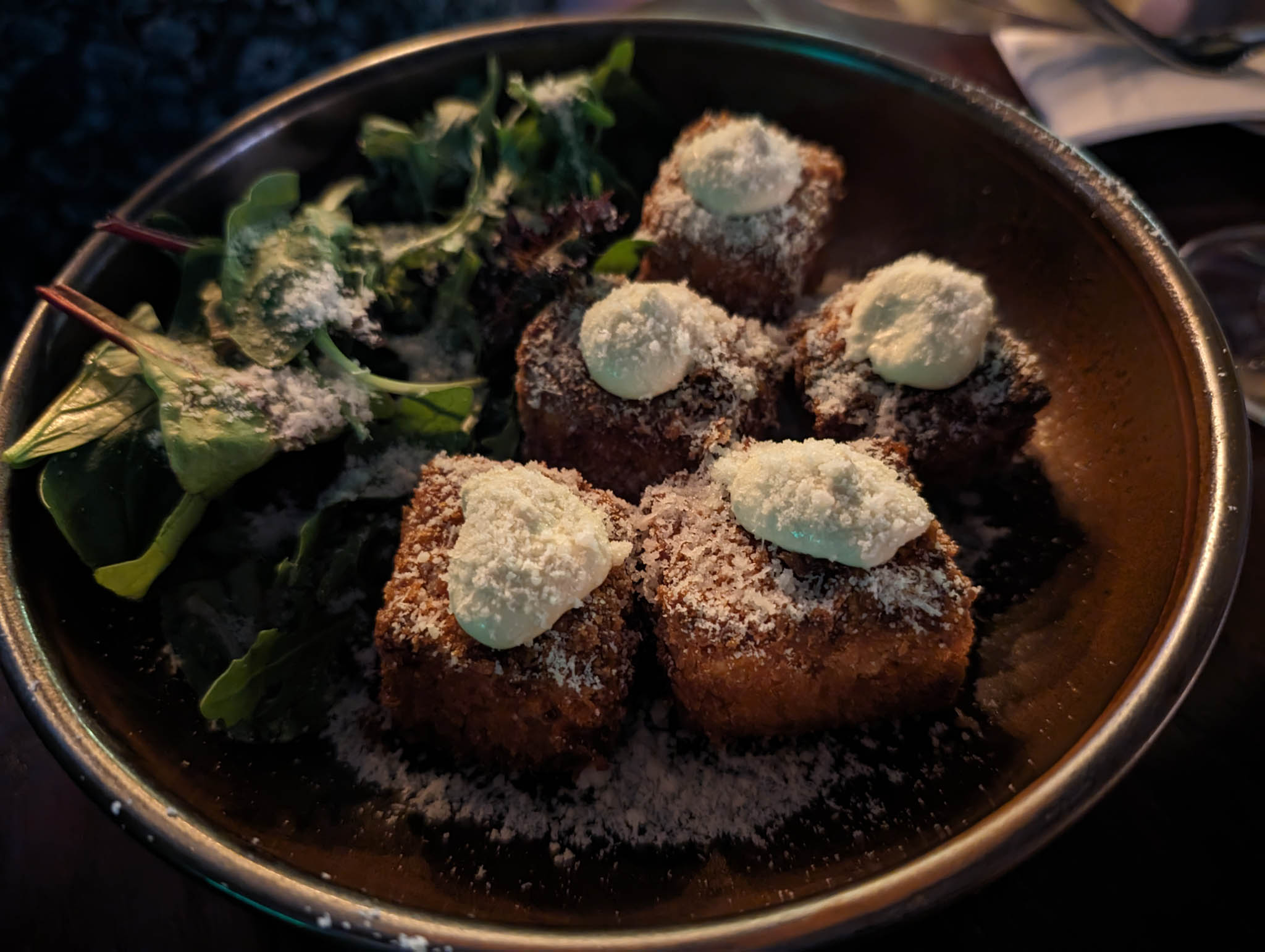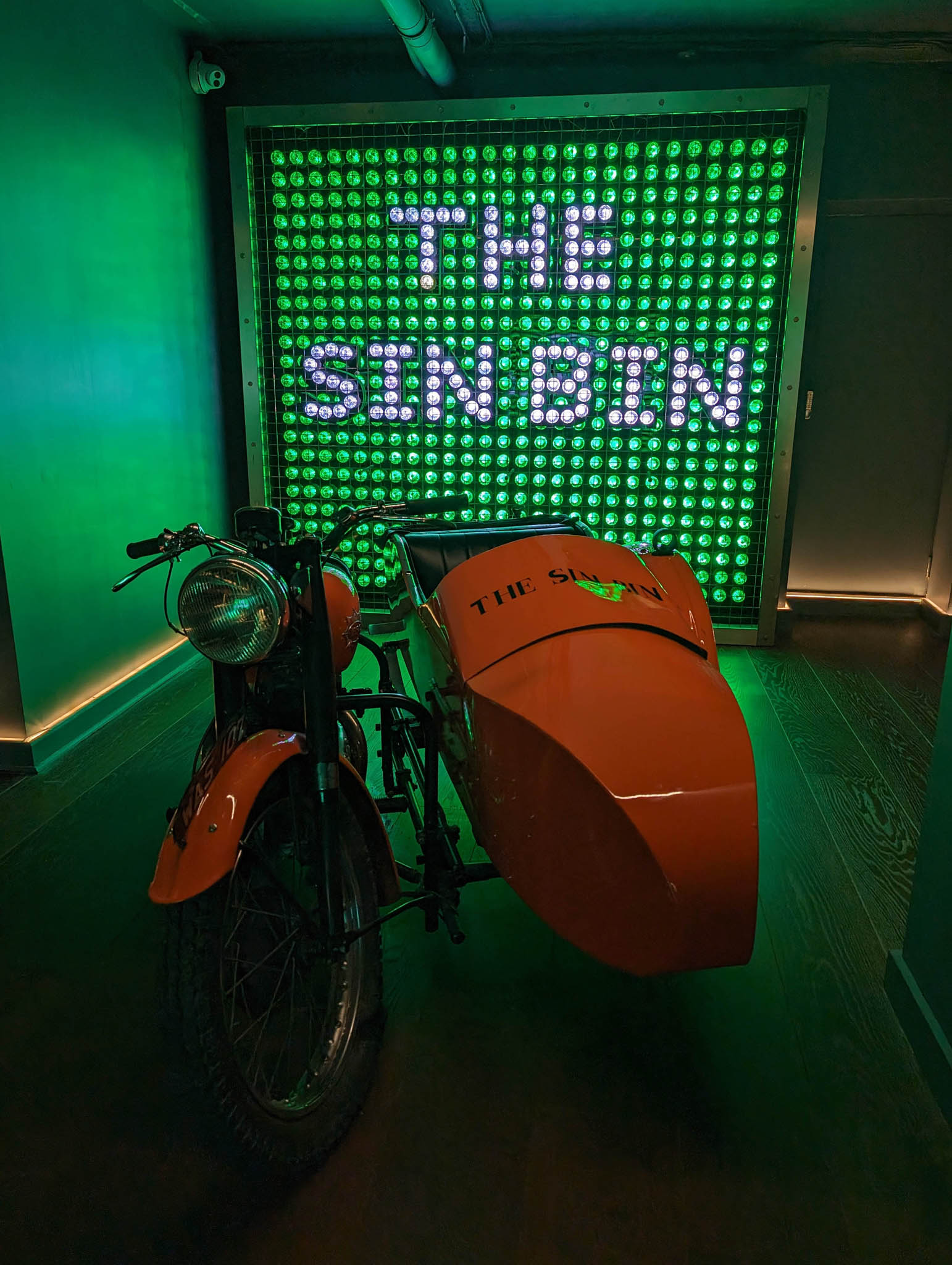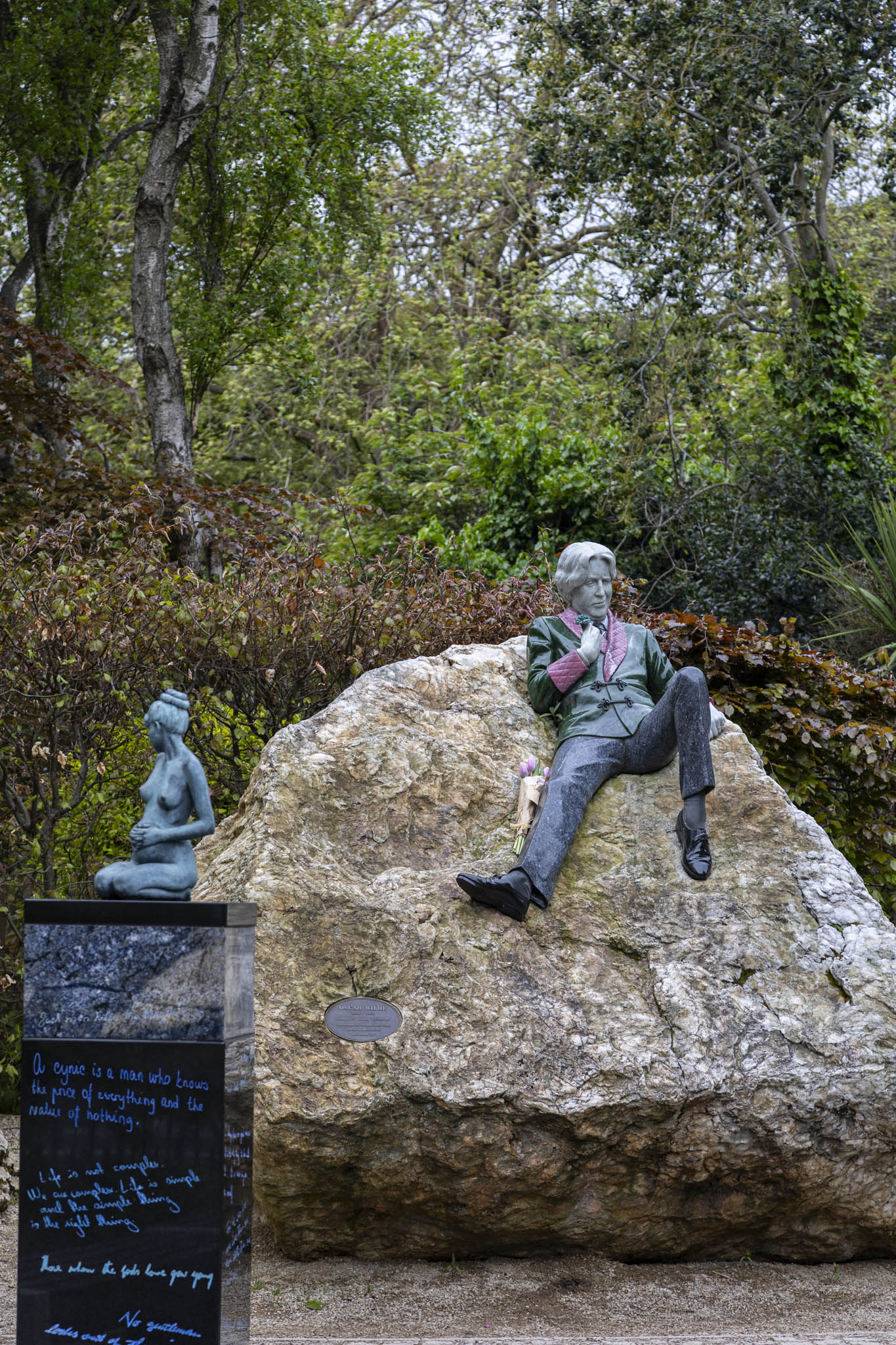Something that should factor into your travel-planning in order to avoid disappointments – and you can probably tell already from this travelogue’s title that this is information coming to you from someone who didn’t do this – is checking to see what specific dates you will be in any particular place. Sundays in Catholic countries – such as our previous day’s visit to Cobh – might mean that a lot of places are shut. And they were. Similarly, though, Bank Holiday Mondays in the British Isles, whether you’re in a country’s capital city or not, may be similarly ghost-like. And it was when we hit Dublin.
I had been to Dublin a couple of times before, both with parents when I was considerably younger than I am now and also while studying at university (Liverpool, since you asked) when I was merely largely younger than I am now. For my wife, this British Isles cruise on Regal Princess was a chance to actually tick Ireland off the visited list for the first time and while Cobh had been nice enough it was Dublin that she was most looking forward to. The liveliness, the friendliness.
If you’ve never read any of my travelogues before or the About page then don’t worry because not many people have, but you might not then know that when we cruise (our preferred from of travel) we do like to take excursions when hitting new places. For this cruise on Regal Princess, because it was pretty close to home for the most part and targeting a lot of American tourists, we found it difficult to justify the cost of ship tours, particularly seeing as language and general customs would not be a barrier to us getting around. We therefore did our own thing at most of the port stops, but in Dublin that wasn’t the case for a couple of reasons: firstly, we could see that the distance from the port of Dun Laoghaire to Dublin was not inconsiderable so that meant shuttle buses and potentially long queues with a lot of people doing the same; secondly, we saw an excursion that included a short tour in Dublin, some free time in Dublin, and a visit to Powerscourt Estate, and we had reasons for wanting to see that latter location. Secret reasons. So, figuring that we could tick off some sights, have time to see the Book of Kells, have a Guinness (I know, so clichéd), and not be clock-watching for the bus back we booked this excursion.
The usual tour process for Princess Cruises commenced with a gathering aboard, trundling down to the tender boat, tendering into the port, hopping aboard the tour bus, and making our way into the Irish capital. It was on the bus that we were told that most of Ireland was closed for the day thanks to the bank holiday. Bugger. Still, shouldn’t affect what we wanted to do, we thought. And then we were told that students were protesting about the treatment of Palestinians by the genocidal Israeli regime so the Book of Kells was off-limits for anyone who wanted to look at it. Bugger, again. We supported the students and the Palestinians, and we still do, but it was bloody annoying to effectively visit Ireland for two days and find it shut.
Anyway, on with the guided tour part. We got off the bus at Merrion Square, a Georgian garden square dating from the late eighteenth century, and the townhouses on three of its sides that we’d be taking more of a look at (than we wanted) all date from the same period. First, though, we had pointed out to us St Stephen’s Church, known as the Pepper Canister Church for obvious reasons, and the statue of the engineer William Dargan, designer and builder of large parts of Ireland’s railway system and several bridges, one of which was in the city.
The main purpose of this visit to the square was to admire the Georgian buildings and doors that have achieved a level of fame of their own, and yes, they were very nice, but once you’ve seen a few then do you really need to see more? Apparently, on this tour, you do, and so we did, and it seemed to go on and on. Some of this might have been my general feeling of grumpiness at what was shaping up to be a disappointing visit to Dublin.
Some of the tour also touched on famous inhabitants of the houses over the years, with the most notable being Oscar Wilde and W.B. Yeats, but there seemed a lot more about the door designs and colours than I think most people were interested in. I like architecture but this wasn’t described as an architectural excursion and you could sense some fidgeting amongst the passengers after a while.
As Merrion Square was where we’d need to meet back for the bus to take us onto the afternoon’s part of the excursion we were then given the option of heading off for some free time on our own, but as the guide was heading in the direction we wanted to walk anyway we tagged along with the portion of the group who’d remained for a bit.
The modern building below is the library attached to Trinity College. Knowing that behind it, in another building, the Book of Kells was laughing at us not being able to see it was not enjoyable.
Lovely human being Taylor Swift was due to visit Dublin as part of her Eras Tour the following year and we saw a dad and his young daughter stringing up some temporary sheeting to start work on some artwork we assumed was for it on the street. We’d see the nearly-finished piece when we came back past this point later on.
The Tart with the Cart is the local name for the Molly Malone statue, the point at which we decided to explore a little more on our own with what little time we had. As is the way with statues like this all around the world there’s a tendency to rub parts, for luck in most cases, or because people are generally perverted little oiks who objectify women in this particular instance.
We continued towards Temple Bar because it’s apparently a fairly popular tourist trap if it’s open. Just on the outskirts of this neighbourhood an interesting sculpture caught my eye. This is the Tree of Gold (or Crann an Óir, and don’t ask me how to pronounce that), commissioned by Ireland’s Central Bank as a public artwork to commemorate Ireland receiving European City of Culture status in 1991.
Temple Bar sits on the south bank of the River Liffey so we had a chance to see both of these Dublin landmarks (okay, one’s more a watermark, but you know what I mean), and there was a lot of colourful street art around, which we always enjoy. We were never going to get the full feel of the place on an overcast Monday afternoon when nearly everything was closed but on the plus side we also didn’t get robbed blind at any of the pubs there.
We had time to stop somewhere for a drink and some food – the excursion did not include a meal despite its reasonably long duration – and we figured we’d head back towards Merrion Square where we’d seen an open pub on the corner just so that we wouldn’t be pressed for time getting back to the bus. The Taylor Swift artwork was coming along well.
The pub we stopped at was called The Sin Bin – a sporting reference, as you could probably tell – and it was large, clean, but understandably a bit soulless there with some perfunctory service when we popped in as we were a couple of maybe eight people in the place. My wife opted for a cider while I fulfilled our legal obligations and ordered a Guinness and they were both okay, but nothing wonderful, and we’ve had better of both back home in England many times. The food we ordered, however, was excellent, and huge. We struggled to finish these plates between us.
Before the bus turned up to pick us up from the corner of Merrion Square I grabbed a quick shot of a sculpture of its most famous former resident.
In the next post in this British Isles cruise series we’ll be concluding our tour with a visit to Powerscourt Estate and Gardens.


